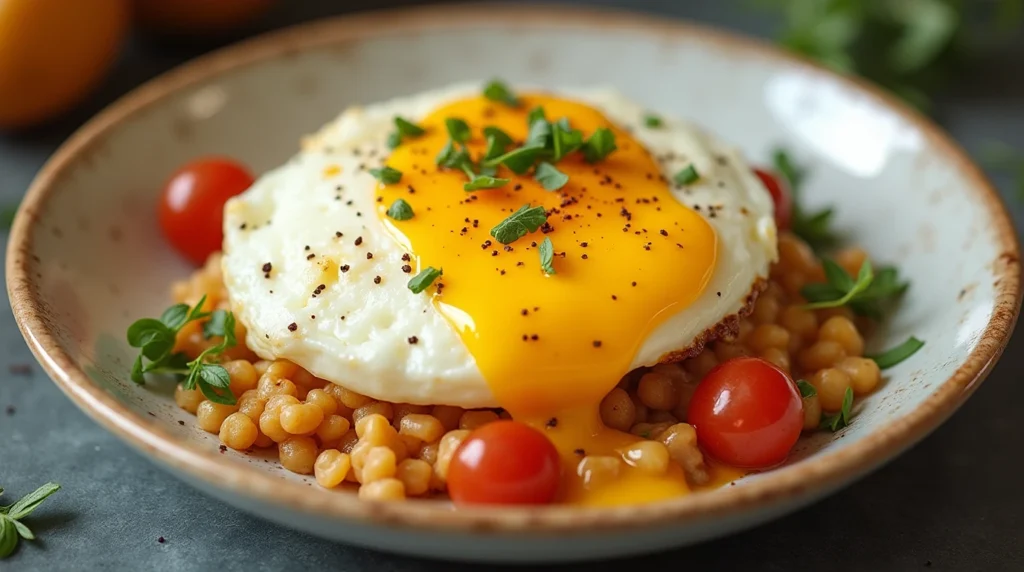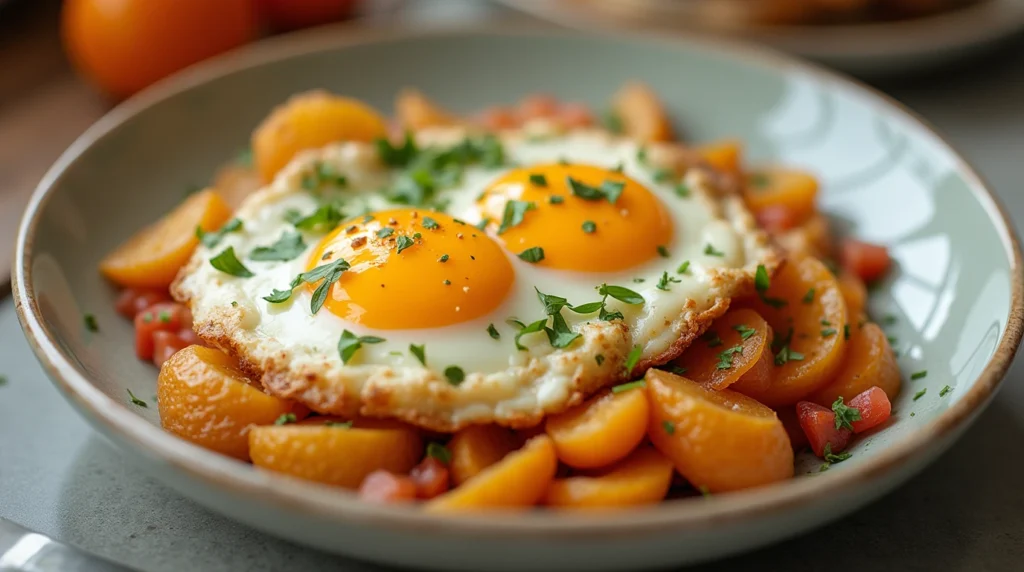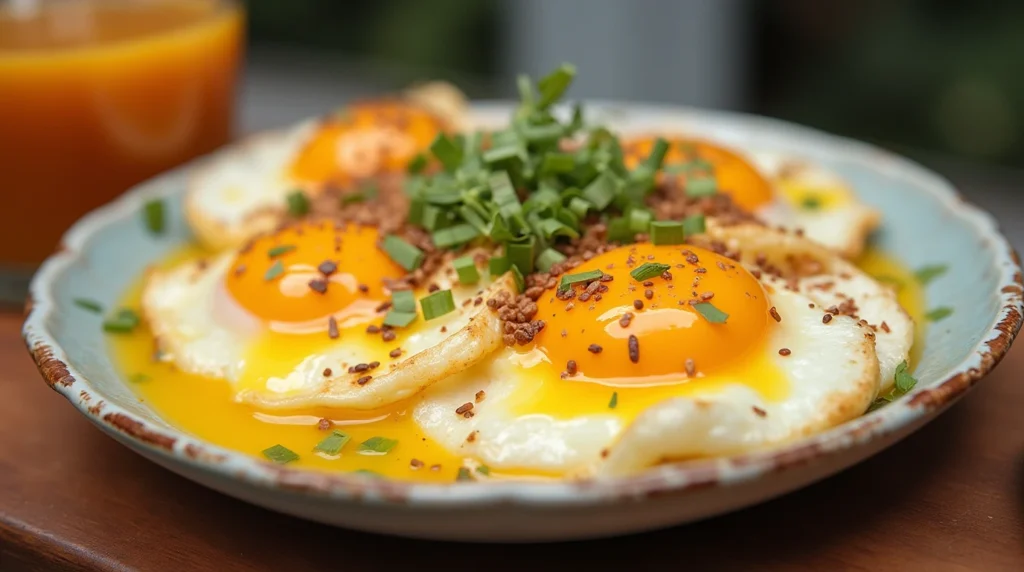Introduction: The Secret to Fluffy Scrambled Eggs

When was the last time you sat down to a plate of perfectly scrambled eggs—soft, creamy, and fluffy? If you’re like most people, getting scrambled eggs just right can sometimes feel like a challenge. Dry, rubbery eggs are all too common, and they can leave you wondering what went wrong. But fear not! Making fluffy scrambled eggs isn’t as tricky as it may seem. With a few simple techniques and the right ingredients, you can master this breakfast staple and impress everyone at the table.
In this guide, we’ll walk you through everything you need to know to make the fluffiest scrambled eggs, from choosing the best eggs to using the perfect cooking method. Whether you’re a seasoned chef or a beginner in the kitchen, these tips and tricks will help you create scrambled eggs that are rich, smooth, and, most importantly—fluffy.
Essential Ingredients for Fluffy Scrambled Eggs
Before you even think about cooking, it’s important to start with the right ingredients. Let’s take a look at what you’ll need:
Eggs: The Foundation of Great Scrambled Eggs
- Why Quality Matters: Fresh, high-quality eggs make all the difference in the texture and taste of your scrambled eggs. Eggs from free-range chickens tend to have a richer flavor and a more vibrant yolk, which leads to creamier eggs.
- The Right Egg Size: Most recipes use large eggs, but if you’re using smaller or larger eggs, you may need to adjust the amount used in the recipe.
Butter vs. Oil: Which One Gives the Best Texture and Taste?
- Butter: Provides a rich, silky texture and enhances the flavor, which is key to making your scrambled eggs extra fluffy.
- Oil: While oil is a good alternative, it doesn’t provide the same richness as butter. However, if you prefer a lighter, dairy-free option, olive oil or vegetable oil works well.
Milk or Cream: Adding Creaminess to Scrambled Eggs
- Milk: A small splash of milk helps add creaminess and softens the texture. However, don’t overdo it; too much milk can make the eggs runny and flat.
- Cream: For a luxurious, rich scramble, consider adding a bit of cream instead of milk. The higher fat content leads to extra fluffy eggs.
Seasoning: Basic Salt and Pepper, and Other Optional Seasoning Ideas
- Salt and Pepper: Seasoning your scrambled eggs is essential to bring out their natural flavor. Always add salt at the end of cooking to avoid drawing out excess moisture.
- Optional Seasonings: Try adding a pinch of garlic powder, fresh herbs like chives or parsley, or a sprinkle of grated cheese for extra flavor.
How to Whisk Eggs for Maximum Fluffiness
Once you’ve gathered your ingredients, the next step is to whisk your eggs. This is where the magic begins!
The Right Technique: Whisking vs. Stirring
- Whisking: Whisking vigorously incorporates air into the eggs, which is crucial for creating that light, fluffy texture. The more air you introduce, the fluffier your eggs will be.
- Stirring: Stirring is gentler, and while it will still cook the eggs, it doesn’t help achieve the same level of fluffiness.
Time Matters: How Long to Whisk for the Perfect Texture
- How Long to Whisk: Whisk your eggs for about 30 seconds to 1 minute. The goal is to break up the yolks and whites and create a smooth, even mixture with bubbles forming on the surface.
- Over-whisking: Avoid over-whisking as this can lead to a frothy, air-filled mixture that may collapse during cooking.
Tools to Use: Fork, Whisk, or Electric Mixer?
- Whisk: A standard wire whisk is ideal for creating fluffy scrambled eggs.
- Electric Mixer: For a super fluffy texture, use a hand-held electric mixer on low speed for about 15 seconds.

The Best Cooking Method for Fluffy Scrambled Eggs
Now that your eggs are ready, it’s time to cook them to perfection. Here’s how to do it:
Non-stick Skillet: Why This is the Best Tool for Fluffy Eggs
- Non-stick Surface: A non-stick skillet ensures that the eggs cook evenly without sticking. This is key to achieving a smooth, fluffy texture.
- Size of the Pan: Use a medium-sized skillet. Too large of a pan will spread the eggs too thin, making them dry.
Low and Slow Cooking: The Secret to Soft, Creamy Texture
- Cook on Low Heat: Fluffy scrambled eggs require patience. Cooking on low heat helps preserve the moisture and ensures even cooking.
- Stir Gently: Use a silicone spatula to stir the eggs gently, allowing the eggs to cook in soft curds.
Butter in the Pan: How and When to Add Butter for a Silky Finish
- Butter First: Add butter to the pan before the eggs, ensuring that it melts evenly to coat the pan. This creates a smooth, silky finish.
- Add Butter During Cooking: If you like extra creamy scrambled eggs, you can add more butter midway through cooking for added richness.
Common Mistakes to Avoid When Making Scrambled Eggs
Even the best cooks make mistakes. Here are a few to avoid to ensure your scrambled eggs turn out perfectly every time:
Overcooking: Why Overcooked Eggs Turn Dry and Rubbery
- Watch the Timer: Scrambled eggs cook quickly. Overcooking them leads to dry, rubbery eggs, so be sure to remove them from the heat while they are still slightly undercooked. The residual heat will finish cooking them.
Too Much Heat: The Importance of Cooking Eggs on Low Heat
- Gentle Heat: High heat causes scrambled eggs to toughen up. Always use low heat for the best results.
Skipping the Whisking: Why It’s Crucial for Texture
- Whisking is Key: If you skip the whisking step, the eggs will lack the necessary fluffiness and may end up with a rubbery consistency.
Not Adding Enough Butter or Milk: Why This Affects Fluffiness
- Balance is Everything: Not using enough butter or milk can make the eggs dry. A little butter goes a long way to enhance the creaminess of your scrambled eggs.
Variations and Add-ins for Ultimate Scrambled Eggs
Scrambled eggs are versatile, and there are many ways you can enhance their flavor and texture. Here are some ideas to elevate your eggs:
Cheese: How to Make Cheesy Scrambled Eggs Without Sacrificing Fluffiness
- Types of Cheese: Go for soft cheeses like cream cheese, goat cheese, or even grated cheddar for a creamy, melty texture.
- Add Cheese at the Right Time: Stir the cheese in gently during the last minute of cooking to ensure it melts smoothly.
Herbs and Spices: Adding Fresh Herbs or Spices for Extra Flavor
- Fresh Herbs: Chives, parsley, tarragon, and basil can all be added for a fresh, vibrant flavor.
- Spices: A pinch of paprika, black pepper, or even chili flakes can add some kick to your scrambled eggs.
Toppings: How to Elevate Your Scrambled Eggs with Toppings
- Avocado: Top your scrambled eggs with creamy avocado slices for extra richness.
- Salsa: Add a spoonful of salsa for a zesty, fresh flavor.
- Crumbled Bacon: For a savory addition, top with crispy bacon crumbles.
How to Serve Your Fluffy Scrambled Eggs
After you’ve perfected your scrambled eggs, you’ll want to know how to serve them in the most appealing way. Presentation and pairing can make a huge difference in the overall experience of eating scrambled eggs.
Plating Techniques: How to Present Scrambled Eggs Like a Pro
- Use a Warm Plate: Scrambled eggs can lose heat quickly, so serve them on a warm plate to keep them at the perfect temperature.
- Garnish with Fresh Herbs: A sprinkle of freshly chopped herbs like parsley, chives, or tarragon can elevate the dish’s appearance and flavor.
- Add a Touch of Color: Pair your scrambled eggs with colorful sides such as sautéed spinach, grilled tomatoes, or fresh fruit to make the plate visually appealing.
Pairing Ideas: What to Serve with Scrambled Eggs
- Toast or English Muffins: Crispy toast or an English muffin provides a satisfying crunch that complements the creamy texture of the eggs.
- Avocado Toast: Spread mashed avocado on toast for a creamy, healthful addition to your scrambled eggs.
- Sautéed Vegetables: Adding sautéed mushrooms, bell peppers, or spinach can bring extra flavor and nutrients to your meal.
Nutritional Information for Scrambled Eggs
While scrambled eggs are delicious, they can also be nutritious. Let’s take a look at the key nutritional benefits of scrambled eggs and how you can modify the recipe to suit your dietary needs.
Basic Nutritional Breakdown
- Protein: Eggs are an excellent source of protein, essential for building and repairing tissues.
- Vitamins and Minerals: Eggs are packed with vitamins A, D, E, and B12, as well as minerals like selenium and choline.
- Healthy Fats: The fats in eggs (especially in the yolk) help with nutrient absorption and are important for cell function.
Low-Calorie Modifications
- Egg Whites Only: For a lower-calorie version, you can use only egg whites. This eliminates most of the fat, although you’ll miss out on some of the flavor and richness.
- Non-Dairy Options: If you want to make the dish dairy-free, you can use non-dairy milk (like almond or oat milk) and skip the butter, opting for a plant-based oil.
Gluten-Free Scrambled Eggs
- Scrambled eggs are naturally gluten-free, making them a perfect option for those following a gluten-free diet. Just ensure that any add-ins or seasonings (like bread or sauces) are also gluten-free.

The History of Scrambled Eggs
Sometimes, knowing the background of a dish can deepen your appreciation for it. Scrambled eggs have been a popular breakfast choice for centuries, and while their exact origin is unclear, they have evolved in various cultures. Here’s a quick look at the history of scrambled eggs:
Early Beginnings
- Ancient Rome: The earliest records of eggs being scrambled date back to ancient Rome, where they were often mixed with spices and cooked with oil.
The French Influence
- French Scrambled Eggs: The French are credited with refining scrambled eggs, often cooking them slowly and stirring them gently to maintain a creamy texture. The French version, often referred to as “œufs brouillés,” is a staple of haute cuisine.
Modern Scrambled Eggs
- Global Popularity: Today, scrambled eggs are a worldwide breakfast favorite, appearing in various forms across many cultures, from the classic American style to the creamy Italian “uova strapazzate.”
Fluffy Scrambled Eggs for Special Diets
Making scrambled eggs that cater to different dietary preferences or restrictions is easier than you might think. Here are a few modifications that allow you to enjoy fluffy scrambled eggs while accommodating specific needs:
Vegetarian Scrambled Eggs
- Plant-Based Scramble: For vegetarians, a great option is tofu scramble, which mimics the texture of scrambled eggs. Use firm tofu, sautéed vegetables, and turmeric for color and flavor.
Dairy-Free Scrambled Eggs
- Non-Dairy Substitutes: You can easily replace dairy ingredients like milk and butter with plant-based alternatives such as almond milk and dairy-free butter. These substitutions ensure that your eggs stay creamy without the dairy.
Keto-Friendly Scrambled Eggs
- Low-Carb Scrambled Eggs: Eggs are naturally low in carbs, making them a perfect option for a keto diet. Add butter or coconut oil to increase the fat content, and consider pairing with avocado or bacon for a satisfying meal.
High-Protein Scrambled Eggs
- Add Extra Protein: If you’re looking to increase the protein content of your scrambled eggs, try adding cooked chicken breast, turkey bacon, or even a scoop of protein powder to the eggs. Just make sure to adjust the seasoning accordingly.
Troubleshooting Common Scrambled Egg Problems
Even with the best intentions, sometimes scrambled eggs don’t turn out as expected. Here are some common issues you might encounter and how to fix them:
1. Eggs Are Too Dry or Rubbery
- Solution: Cook your eggs on low heat and remove them from the pan before they’re fully cooked. The residual heat will finish cooking them without overdoing it.
2. Eggs Are Too Runny
- Solution: If your scrambled eggs are too runny, you’ve likely undercooked them. Allow them to cook for a bit longer, stirring occasionally to avoid overcooking.
3. Eggs Stick to the Pan
- Solution: Use a non-stick skillet and make sure to coat the bottom with butter or oil before adding the eggs. This will prevent them from sticking and ensure easy cleanup.
4. Eggs Are Too Oily or Greasy
- Solution: Avoid using too much butter or oil. A little goes a long way in making your eggs creamy without making them greasy. Consider draining any excess fat before serving.

Conclusion: Master the Art of Fluffy Scrambled Eggs
Now that you have all the tips and tricks for making the perfect scrambled eggs, it’s time to put them into practice. Whether you’re cooking for yourself or impressing guests, these techniques will ensure your scrambled eggs are always fluffy, creamy, and delicious.
Don’t be afraid to experiment with different ingredients and toppings to create your signature scrambled eggs. Remember: practice makes perfect, and with the right approach, you’ll be able to make eggs that rival any restaurant breakfast!
FAQ Section:
Q1: How do I make scrambled eggs fluffier?
- A1: To make scrambled eggs fluffier, whisk the eggs thoroughly to incorporate air and cook them on low heat. Add a little milk or cream for extra creaminess.
Q2: Can I make scrambled eggs without butter?
- A2: Yes, you can use oil as a substitute for butter, but butter offers a richer flavor and texture that oil can’t replicate.
Q3: How do I avoid overcooking scrambled eggs?
- A3: Cook your scrambled eggs on low heat and remove them from the pan while they are still slightly undercooked. The residual heat will finish cooking them perfectly.
Q4: What’s the best seasoning for scrambled eggs?
- A4: Salt and pepper are essential, but you can add other seasonings like garlic powder, fresh herbs, or a dash of hot sauce for extra flavor.
Q5: Can I add cheese to my scrambled eggs?
- A5: Absolutely! Adding cheese like cheddar or cream cheese gives your scrambled eggs a rich, creamy texture. Stir it in at the end of cooking for the best results.
